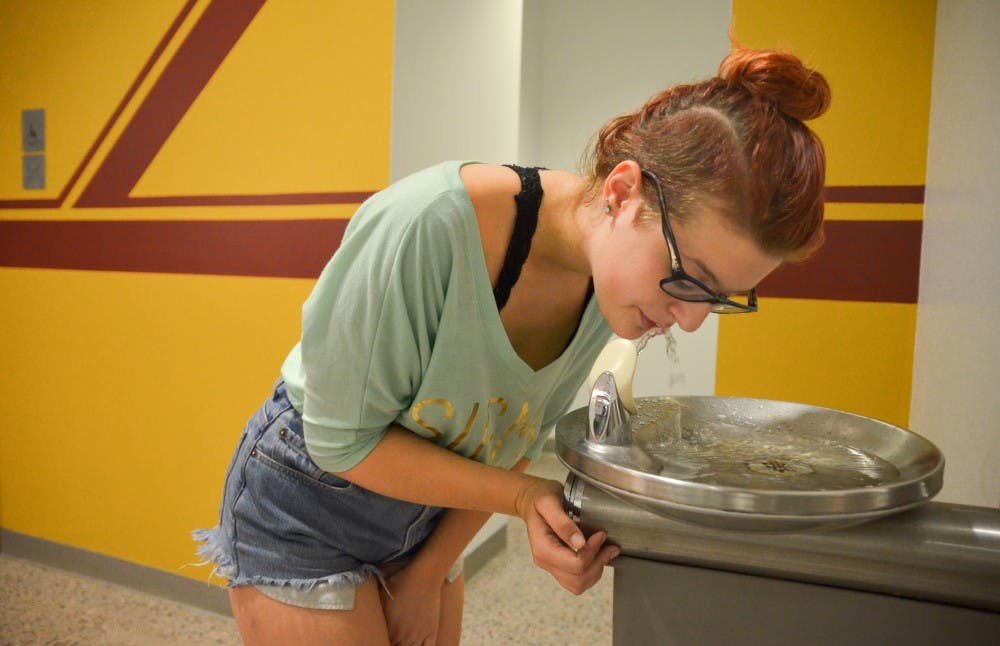Valley residents are concerned because a recent study of the area's water supply found that a carcinogenic chemical is in their local drinking water.
According to a recent report by the Environmental Working Group, Phoenix and surrounding Valley cities have been exposed to the highest amounts of chromium-6 in drinking water when compared to any other city nationwide.
Tempe is one of the affected cities, though it ranks with the lowest amount among Valley cities.
What is chromium-6?
Chromium-6 is typically produced by industrial processes. The metallic element is dangerous when inhaled or digested, creating serious health risks for workers in industries in which it is commonly found.
The carcinogen gained notoriety following the release of the film "Erin Brokovich", which retold the story of Brokovich's investigation of the drinking water in Hinkley, California. Brokovich began her investigation after several individuals in the community became sick.
How is chromium-6 in water supply regulated?
It is the Environmental Protection Agency’s responsibility to regulate chromium levels in water supply.
According to the agency's website, EPA has a drinking water standard of 0.1 milligrams per liter or 100 parts per billion for total chromium levels. This includes all forms of chromium, including chromium-6.
However, the city of Phoenix's water supply averaged 7.853 parts per billion, according to the EWG report.
Caroline Oppleman, a public information officer for the Arizona Department of Environmental Quality, said in Arizona, the water supply chromium levels do not surpass federal standards.
“Public drinking water supplies in Arizona meet the federal health-based standard for chromium and always have,” Oppleman said. “In fact, ADEQ has never had to cause legal action related to the chromium standard in drinking water served by Arizona public water systems.”
However, these levels could be interpreted as a seemingly arbitrary standard.
According to the EPA, the Safe Drinking Water Act requires the agency to "periodically review" the national drinking water regulations for each contaminant and revise them, if appropriate.
Warren Tenney, the executive director of the Arizona Municipal Water Users Association, said that determining acceptable levels is a challenge for the EPA.
“As of right now, the EPA hasn’t come up with a consensus on what is the right level when it comes to chromium-6,” Tenney said. “They are reviewing it — they’re in the process of doing that, and once they update that standard, then the water providers will comply and make certain that it’s there.”
Although determining the proper standard for contaminant levels is still a mystery, Margot Perez-Sullivan, an EPA public information officer, said this question is at the top of EPA’s agenda and that the agency is in the process of finding a solution.
“Ensuring safe drinking water for all Americans is a top priority for EPA,” Perez-Sullivan said. “The agency has taken many actions to improve information on chromium and its potential health risks in drinking water.”
This means that while the current EPA standard is listed at 100 parts per billion, this number is subject to change based on further assessment.
Perez-Sullivan said that the EPA is actively working on the development of the Integrated Risk Information System that will assess the dangers of varying chromium-6 levels, including an evaluation of the metallic element's potential health effects.
The EPA expects the draft of the assessment to be available for public comment in 2017.
Is it safe to drink Valley tap water?
Tenney, AMWUA's executive director, said that despite the recent report, the water supply of Valley communities is still clean.
“As of today, our cities are delivering safe drinking water,” he said. “Chromium-6 is a natural element that is found already in groundwater. It’s tied with volcanic geologic formations, which is much of the type of volcanic geologic land that you find out here in the southwest.”
While Tenney insists that geographic location is the most prevalent factor, he didn’t completely rule out that industrialization could be part of the problem.
“There are industrial activities or businesses that can produce and discharge chromium-6, but pretty much here in the Valley, it’s predominantly due to it just being found naturally here,” Tenney said.
Reach the reporter at vkeys@asu.edu or follow @VKeys1231 on Twitter.
Like The State Press on Facebook and follow @statepress on Twitter.





